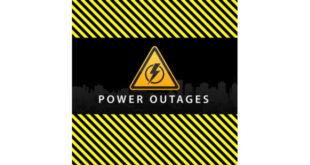Many theories abound as to how the now bankrupt City of San Bernardino arrived to this point. Anyone over 40 years of age and who lived in the Inland Empire from the 1950’s to the 1980’s remembers it was not always this way. Some of the factors involved were clearly beyond the control of residents or community leaders. We are often reminded of the closure of many large job providers including Kaiser Steel, Santa Fe Railroad, and Norton Air Force Base, and that is fair and reasonable.
But, the loss of major job producers is by no means the only cause for San Bernardino’s current problems.
One problem that was well within control of city leaders and residents is its housing situation. As a matter of policy, San Bernardino has allowed a hodge-podge of development practices within the city which have led to the current problems of excessive low income housing, the deterioration of the downtown, and the slow creep of blight in San Bernardino that now infests nearly every neighborhood of the city to higher or lesser degrees.
It is not that there weren’t fair warnings. Long-time residents of San Bernardino remember well the many differing demarcation lines of blight as it spread Northward through San Bernardino decade by decade from 9th Street, to Baseline, to Highland, and now just about everywhere else.
Currently, San Bernardino government has identified 4,600 residential properties that have significant to severe code violations, which is probably just scratching the surface.
So what can San Bernardino do to start to reverse the blight problem?
San Bernardino maintains the police powers of code, police and fire enforcement. They have begun to utilize those resources to place severely blighted properties into receivership programs. But that process is restricted (as it should be) by property rights and Constitutional pitfalls, is heavy handed and requires excessive amounts of city resources.
As redevelopment agencies are now defunct, the city has no financial resources to begin solving this $1 billion problem.
If the city really wants to fix its blight problem, it needs to engage private resources and market economic forces in a multiyear effort to restore San Bernardino’s housing stock. There is really no long-term government fix to this issue. Those programs have clearly failed.
To fix the blight problem, ultimately, San Bernardino must rid itself of the bad actors who have come to dominate its multifamily and single family rental housing market and replace those companies and individuals with new homeowners and responsible rental property owners and managers. There are literally hundreds of reputable property investors in Southern California that would willingly help the city do just that.
First, the city must increase financial penalties for code violations and have an aggressive lien program against those properties to enforce them with escalating scales for noncompliance.
Second, the city should create a violation forgiveness program for any person or company that purchases deteriorated properties in the city with a few caveats, among them being a six month grace period for all properties newly purchased under the program with forgiveness of city liens upon the successful restoration and rehabilitation of those properties under guidelines set by the city.
Current serious code violators and their subsidiary agents would be prohibited for a period of five years from participation in the forgiveness program.
Third, as condition of the lien forgiveness, properties must be sold to owner-occupied homebuyers or, if they are to be maintained as rentals (single or multifamily) that the property must have a minimum five year contract for management with a local, prescreened property management company to insure that renters are financially capable, that property is maintained, and that local representation is available to be accountable to the city. This property management contract would be a non-revocable condition of the sale and of the lien forgiveness program.
While there are many details that would need to be ironed out, engaging private sector investors is the only possible way for the city to begin making real headway on blight, restoring neighborhoods, and increasing property values throughout the city. It’s time to get started.
 IE Business Daily Business news for the Inland Empire.
IE Business Daily Business news for the Inland Empire.


